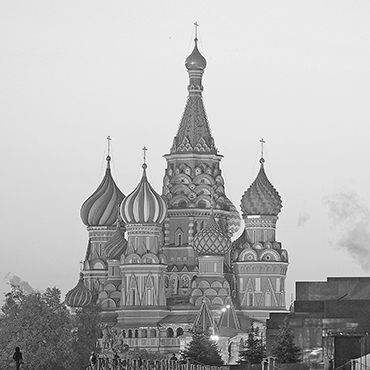HOW RUSSIA IS COVERING UP ITS WAR LOSSES
Two-and-a-half years into its war on Ukraine, Russia's battlefield losses are steadily mounting – and becoming a political problem for the Kremlin. That, argues Paul Goble in his Window on Eurasia blog, helps explain recent changes to combat casualty reporting by Russian authorities, which have made it more difficult for outside observers to discern precisely how heavy the Kremlin's losses have in fact been. Experts, Goble notes, have tended to use data from ROSSTAT, Russia's state statistics agency, regarding age groups most likely to be involved in the fighting, "[b]ut now Moscow has closed that window on its war losses by no longer releasing data on such losses by age groups." As a result, "it will be far more difficult for anyone to come up with accurate data on Russian losses."
That, however, could end up being a double-edged sword for the Kremlin, Goble notes. While it may assist the Russian government in obscuring the true extent of the losses it has suffered to date, it may also prompt "a flurry of reports not based on Russian government statistics." That, in turn, "may have the effect of alarming ordinary Russians even more, exactly the opposite of what the Putin regime hopes for." (Window on Eurasia, July 19, 2024)
HARD TIMES FOR MOSCOW'S MERCS IN AFRICA
Before he dramatically fell out of favor with Russian President Vladimir Putin last year, restauranteur-turned-propagandist Yevgeny Prigozhin had managed to establish a sprawling mercenary empire via his widely feared Wagner Group. At the time of Prigozhin's untimely death by plane crash a year ago, Wagner had become active in more than half-a-dozen African nations, where weak governments and vulnerable military juntas have afforded Moscow an opportunity to augment local forces and establish critical influence.
While the Kremlin has moved quickly to assert control over Wagner's activities abroad, making them a more organic part of its foreign policy, those operations have not been without their setbacks. Take Mali, for instance. In late July, rebel fighters in the north of the west African state carried out a large-scale ambush on Russian mercenaries accompanying Malian government troops. The "complex ambush," which reportedly killed dozens of Wagner mercenaries, was jointly claimed by local Tuareg rebels and JNIM, an al-Qaeda affiliate active on the continent. (CNN, July 29, 2024)
RUSSIA'S MODERN EXILES
Since the start of Russia's war on Ukraine in February 2022, the country has experienced a veritable population exodus, as ideological objectors, political opponents and those seeking to avoid conscription have sought the safety of other nations. Just how big this cohort, is, however, is the subject of some debate – one complicated both by Kremlin propaganda and by the fact that at least some percentage of exiles have since returned. But a new study by The Bell, a leading Russian opposition news outlet, suggests that the ranks of those who have fled Russia and remain abroad is larger than commonly understood. "The wave of people leaving Russia since February 2022 is the most significant exodus from the country in three decades," it notes. "At least 650,000 people who left Russia after it invaded Ukraine are still abroad. They present a political and economic headache for the Kremlin, and their absence is increasing tensions in the labor market at home." The Bell's study notes that, predictably, the highest number of these "wartime emigres" fled to neighboring nations, such as Armenia (110,000), Kazakhstan (80,000) and Georgia (73,562). However, other destinations, notably Israel and the United States, have also seen a surge in Russian exiles seeking shelter.
Significantly, this exodus has created a massive brain drain and economic problem for the Kremlin. Specifically, the study notes, "those who left Russia can be characterized as highly politicized, well-educated and in a better financial situation than the average Russian. They are typically young (aged 20-40) and 80% have university-level education. They are more likely to run their own businesses or work in white-collar roles such as IT, data analysis, sciences or the creative sector."
For the Kremlin, the result has the potential to be nothing short of ruinous. "In raw terms, the 650,000 who have left represent just 0.85% of Russia’' workforce," the study outlines. "However, when the country faces a seriously limited supply of labor, this is a significant loss of young, highly talented and educated workers." Moreover, because "the hundreds of thousands of those who left are among Russia's most active and enterprising," their departure "will make it harder for innovation to trickle through the economy and for productivity to increase, potentially hampering Russia's economic potential for years to come." (The Bell, July 19, 2024)
Want these sent to your inbox?
Subscribe
Russia Policy Monitor No. 2640
Related Categories:
Democracy and Governance; Intelligence and Counterintelligence; Warfare; Corruption; Resource Security; Africa; Russia; Ukraine


